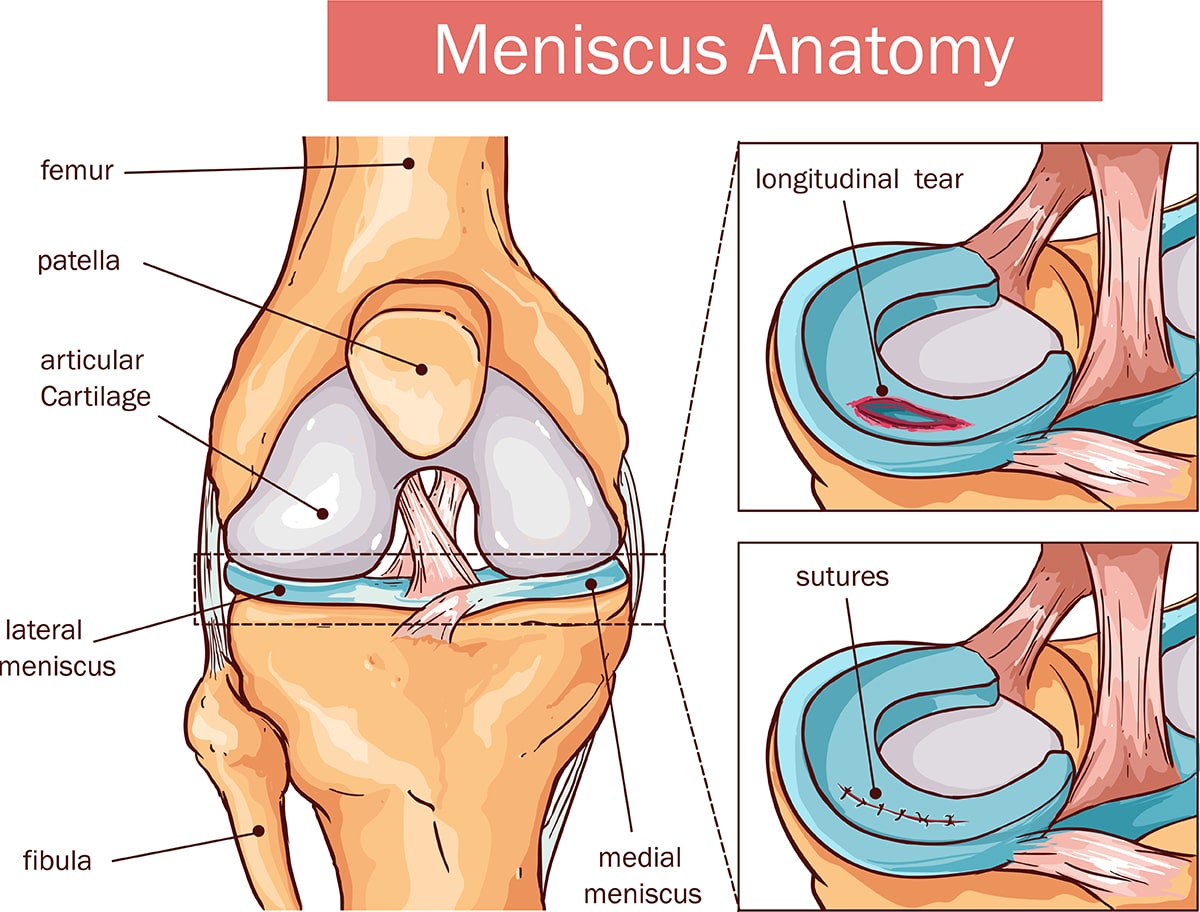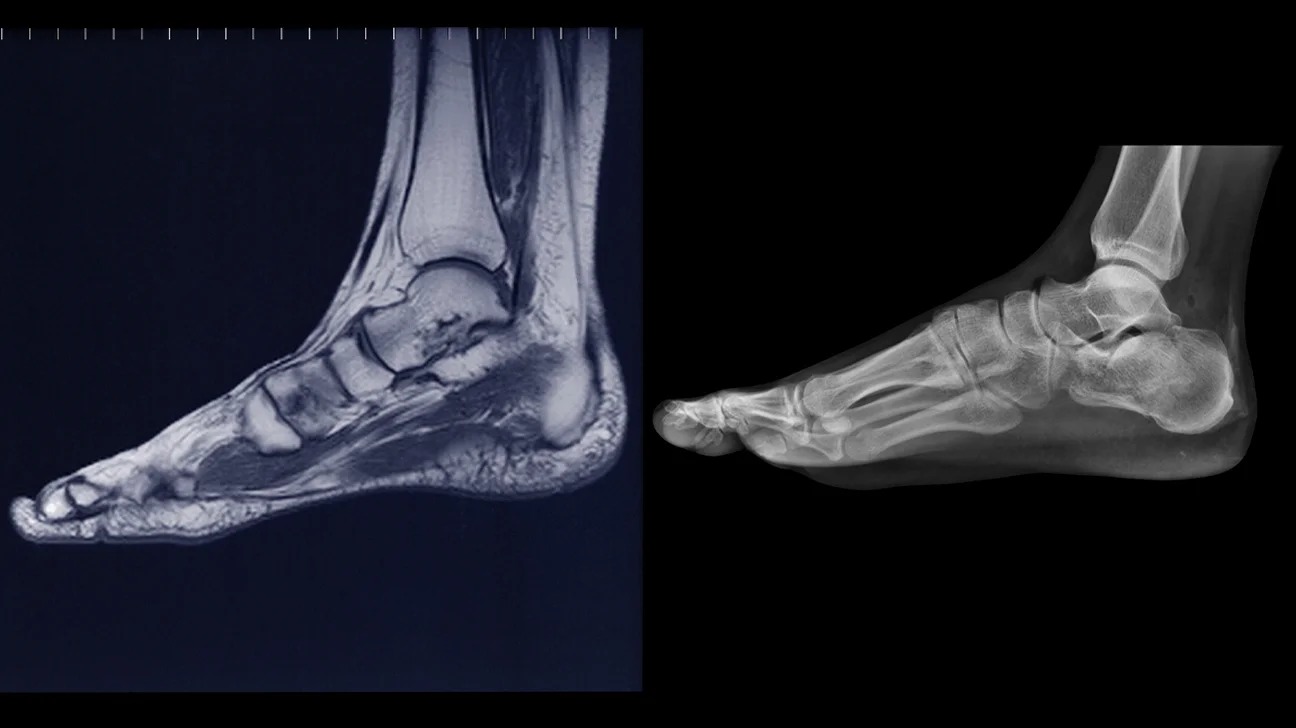

Finance
How Much Is Foot Surgery Without Insurance
Published: November 23, 2023
Get information on the costs of foot surgery without insurance and explore your financial options. Find out how you can finance your procedure and get the treatment you need.
(Many of the links in this article redirect to a specific reviewed product. Your purchase of these products through affiliate links helps to generate commission for LiveWell, at no extra cost. Learn more)
Table of Contents
Introduction
Foot surgery is a medical procedure that can be necessary for individuals dealing with a wide range of conditions or injuries affecting the foot. Whether it’s correcting deformities, treating chronic pain or injuries, or addressing infections, foot surgery can provide relief and improve quality of life. However, the cost of foot surgery can be a major concern for many people, especially those without insurance coverage.
Without the financial security that insurance provides, individuals may find themselves facing significant out-of-pocket expenses for foot surgery. In this article, we will delve into the world of foot surgery costs and explore the options available for those without insurance coverage.
Understanding the intricacies of foot surgery, its costs, and available alternatives is essential for individuals looking to make informed decisions about their healthcare. By gaining knowledge about the cost factors, financing options, and affordable alternatives, individuals can be better equipped to manage the financial aspects of foot surgery.
So, whether you’re considering foot surgery for yourself or are simply curious about the costs involved, let’s dive into the world of foot surgery expenses and explore the ways in which individuals without insurance can navigate this potentially costly path.
Understanding Foot Surgery
Foot surgery is a specialized branch of orthopedic surgery that focuses on correcting problems and ailments affecting the foot and ankle. It involves a range of surgical procedures aimed at addressing various conditions, including fractures, bunions, hammertoes, plantar fasciitis, arthritis, and more.
The goal of foot surgery is to relieve pain, restore function, improve mobility, and enhance overall quality of life. Surgeons may use different techniques and approaches depending on the specific condition being treated. Some common types of foot surgery include:
- Bunionectomy: This procedure involves the removal or realignment of the bunion, a bony bump that forms at the base of the big toe.
- Hammertoe correction: Hammertoe is a condition where the toe joints become permanently bent. Surgery can correct the deformity and alleviate pain.
- Plantar fascia release: This procedure involves releasing the tension in the plantar fascia, a ligament that runs along the bottom of the foot. It is often done to relieve chronic heel pain caused by plantar fasciitis.
- Arthroscopy: This minimally invasive procedure allows surgeons to visualize and treat joint problems in the foot using small incisions and a camera.
- Fracture repair: Broken bones in the foot or ankle may require surgical intervention to realign the bones and promote proper healing.
While foot surgery can provide long-term benefits and improve quality of life, it is important to note that it is not always the first course of treatment. In many cases, non-surgical options such as physical therapy, orthotics, medication, or lifestyle modifications may be recommended initially. However, if these conservative measures fail to provide relief, surgery may be considered as a viable option.
It is crucial to consult with a qualified orthopedic surgeon to determine the most appropriate course of treatment for your specific foot condition. They will evaluate your medical history, conduct a thorough examination, and discuss the available surgical options to help you make an informed decision about your foot health.
The Cost of Foot Surgery
The cost of foot surgery can vary widely depending on several factors, including the type of procedure, the complexity of the condition being treated, the surgeon’s experience, the geographical location, and the healthcare facility where the surgery is performed.
On average, the cost of foot surgery can range from a few thousand dollars to tens of thousands of dollars. Common procedures like bunionectomy or hammertoe correction may cost between $3,000 and $7,000, while more complex surgeries such as ankle fusion or joint replacement can exceed $20,000.
It is important to note that these figures are only estimates and can vary significantly. The overall cost of foot surgery typically includes various components, such as:
- Surgeon’s fees: These fees cover the expertise, time, and skill of the orthopedic surgeon performing the procedure. Surgeon fees can vary based on qualifications and experience.
- Anesthesia fees: Anesthesia is administered during foot surgery to ensure the patient’s comfort and safety. The cost of anesthesia varies depending on the type and duration of the procedure.
- Hospital or surgery center fees: Facilities where the surgery takes place charge for the use of their operating room, equipment, and other services like nursing care and post-operative recovery.
- Post-surgical care: This may include follow-up visits, physical therapy, medications, and medical supplies necessary for the recovery process.
It is worth mentioning that these costs do not include additional expenses that may arise, such as pre-operative tests, imaging studies, or the use of specialized equipment or implants.
Without insurance coverage, individuals are responsible for covering the entirety of these costs out-of-pocket. However, it is important to keep in mind that the price of foot surgery should not be the sole determining factor in choosing a surgeon or facility. The quality of care and the surgeon’s expertise should also be taken into consideration when making this important decision.
In the next section, we will explore the factors that can affect the cost of foot surgery and how individuals without insurance can find affordable alternatives or explore financing options.
Factors Affecting the Cost of Foot Surgery
Several factors can influence the cost of foot surgery, making it important to consider these variables when estimating the expenses involved. By understanding these factors, individuals can better navigate the financial aspects of foot surgery and make informed decisions about their healthcare.
Type and Complexity of the Procedure: The specific type of foot surgery being performed and the complexity of the condition being treated are crucial factors in determining the overall cost. More intricate procedures, such as ankle fusion or joint replacement, generally have higher costs compared to simpler procedures like bunionectomy or hammertoe correction.
Surgeon’s Experience and Reputation: The level of experience and expertise of the orthopedic surgeon performing the procedure can influence the cost. Surgeons with extensive experience and a reputable track record may charge higher fees due to their expertise and skill.
Geographical Location: The cost of foot surgery can vary significantly based on the geographical location of the healthcare facility. Areas with a higher cost of living tend to have higher healthcare costs overall, including surgical procedures.
Healthcare Facility or Hospital Fees: Different healthcare facilities or hospitals may charge varying fees for the use of their operating rooms, equipment, and other services related to the surgery. High-end facilities or specialized centers may have higher costs compared to standard hospitals.
Insurance Coverage: For individuals with insurance coverage, the cost of foot surgery may be significantly reduced depending on the terms and coverage of their insurance plan. Insurance can play a vital role in easing the financial burden by covering a portion of the surgical expenses.
Additional Services and Care: The cost of foot surgery may also include additional services and care such as pre-operative tests, imaging studies, anesthesia, post-surgical medications, physical therapy, and follow-up visits. These additional services can contribute to the overall cost of the procedure.
Location of the Surgery: Where the surgery is performed can impact the cost as well. Different regions or cities within a country may have varying healthcare costs due to factors such as supply and demand, availability of healthcare providers, and local economic conditions.
It is important to note that the actual cost of foot surgery will vary based on these factors and may be subject to negotiation or discounts depending on the individual circumstances. Exploring options for affordable alternatives or financing can also help individuals navigate the financial implications of foot surgery without insurance coverage, which we will discuss in the next sections.
Foot Surgery Options
Foot surgery offers various treatment options depending on the specific condition or injury affecting the foot. The choice of surgery will depend on factors such as the severity of the condition, the patient’s overall health, and the expected outcome of the procedure. Here are some common foot surgery options:
- Bunionectomy: This surgical procedure is performed to correct a bunion, which is a bony bump that forms at the base of the big toe. The surgeon may remove the bump, realign the bones, and correct any deformity present.
- Hammertoe correction: Hammertoe is a condition where the toe joints become permanently bent. Surgery can be done to straighten and realign the affected toe, relieving pain and improving function.
- Plantar fascia release: This procedure involves releasing the tension in the plantar fascia, a ligament that often causes heel pain due to a condition called plantar fasciitis. By relieving the tension, this surgery can alleviate chronic pain in the heel area.
- Ankle fusion: In cases of severe ankle arthritis or instability, ankle fusion surgery may be recommended. This procedure involves fusing the bones together, eliminating the painful joint movement and providing stability.
- Joint replacement: If arthritis significantly affects the foot or ankle joints, joint replacement surgery may be necessary. This procedure involves removing damaged joint surfaces and replacing them with artificial implants, improving function and reducing pain.
The choice of foot surgery option will be determined through discussions with the orthopedic surgeon. They will consider factors such as the patient’s condition, lifestyle, and goals for the surgery. It’s crucial to have open and honest communication with the surgeon to fully understand the benefits, risks, and expected outcomes of each treatment option.
Prior to surgery, the surgeon will perform a comprehensive evaluation, which may include diagnostic imaging and other tests, to determine the appropriate foot surgery option. They will explain the procedure in detail and address any concerns or questions the patient may have.
It’s worth mentioning that foot surgery is not always the first line of treatment. Non-surgical options, such as physical therapy, medication, orthotics, or lifestyle modifications, may be recommended initially. Surgery is typically considered when non-invasive measures fail to provide significant relief or improve the condition.
Affordable Alternatives to Foot Surgery
While foot surgery may be the recommended treatment option for certain conditions, it can be a significant financial burden, especially for individuals without insurance coverage. Fortunately, there are some alternative options available that may provide relief and improve foot health without the need for surgery. Here are some affordable alternatives to consider:
- Physical Therapy: Physical therapy can be a highly effective non-surgical approach for treating foot conditions. Through targeted exercises, stretches, and manual therapies, physical therapists can help improve mobility, reduce pain, and enhance overall foot function.
- Orthotics: Customized orthotic inserts or shoe modifications can provide support and alleviate pain caused by foot conditions. Orthotics can help distribute pressure more evenly, correct gait abnormalities, and improve overall foot alignment.
- Medications: In some cases, medication, such as anti-inflammatory drugs or corticosteroid injections, can help manage pain and reduce inflammation associated with foot conditions. This can provide temporary relief and potentially delay the need for surgery.
- Lifestyle Modifications: Making changes to daily habits and activities can have a significant impact on foot health. This includes wearing supportive shoes, maintaining a healthy weight, avoiding high-impact activities, and practicing proper foot care.
- Alternative Therapies: Some individuals find relief from foot pain through alternative therapies such as acupuncture, chiropractic care, or massage. These therapies can help promote relaxation, reduce muscle tension, and improve circulation.
It’s essential to consult with a healthcare professional, such as a podiatrist or orthopedic specialist, to determine the most appropriate alternative treatment options for a specific foot condition. They can provide a comprehensive evaluation, diagnose the condition, and recommend the most suitable approach for managing the symptoms and improving foot health.
However, it’s important to note that while these alternatives may provide relief, they may not be effective for all conditions or in more severe cases. In some instances, surgery may still be the most appropriate long-term solution. It’s crucial to have open and honest communication with the healthcare professional to determine the best course of action.
Financing Options for Foot Surgery
For individuals without insurance coverage, the cost of foot surgery can be a significant financial challenge. However, there are several financing options available that can help make foot surgery more affordable. Here are some options to consider:
- Payment Plans: Many healthcare facilities and surgeons offer payment plans that allow patients to spread out the cost of the surgery over time. This can help make the payments more manageable by dividing them into smaller monthly installments.
- Medical Credit Cards: Some medical credit cards, such as CareCredit, allow individuals to finance their medical expenses. These cards often offer promotional interest-free periods or low-interest options, making it easier to pay off the surgery over time.
- Healthcare Loans: Applying for a healthcare-specific loan from a financial institution can provide the necessary funds to cover the cost of foot surgery. These loans generally have favorable terms and may offer lower interest rates compared to credit cards.
- Medical Tourism: Exploring the option of medical tourism can sometimes offer significant cost savings. Patients can travel to countries where healthcare costs are lower while still receiving high-quality foot surgery. However, thorough research and careful consideration are essential when considering this option.
- Crowdfunding: Crowdfunding platforms, such as GoFundMe, can be used to raise funds for necessary medical procedures. Through online campaigns, individuals can reach out to friends, family, and even strangers who may be willing to contribute towards their foot surgery expenses.
It’s important to note that when considering financing options, individuals should carefully evaluate the terms and conditions, interest rates, and repayment plans to ensure they are making the right financial decision. It may also be helpful to consult with a financial advisor to determine the most suitable option based on individual circumstances.
Additionally, it is crucial to communicate with the healthcare providers and discuss any financial concerns or limitations upfront. They may be able to offer guidance, suggest cost-saving measures, or provide information on any available financial assistance programs or grants.
Remember, the focus should not be solely on the cost of foot surgery but also on selecting a qualified and experienced orthopedic surgeon. Prioritize quality of care and ensure that the chosen healthcare professional has the necessary expertise to perform the surgery effectively.
By exploring financing options and discussing concerns with healthcare providers, individuals without insurance can have a better chance of obtaining the foot surgery they need while managing the financial aspects responsibly and effectively.
Conclusion
Foot surgery can be a necessary and beneficial option for individuals dealing with various foot conditions or injuries. However, the cost of foot surgery can be a major concern, especially for those without insurance coverage. In this article, we have explored the world of foot surgery costs and provided insights into the available options for individuals without insurance.
Understanding the factors that affect the cost of foot surgery, such as the type and complexity of the procedure, the surgeon’s experience, and the geographical location, is essential. By being aware of these factors, individuals can have a clearer understanding of what to expect financially.
We have also discussed affordable alternatives to foot surgery, including physical therapy, orthotics, medications, and lifestyle modifications. These alternatives can provide relief and improve foot health without the need for invasive surgery.
Additionally, we have explored financing options, such as payment plans, medical credit cards, healthcare loans, medical tourism, and crowdfunding. These options can help individuals manage the cost of foot surgery and make it more affordable, allowing them to receive the necessary treatment without facing overwhelming financial burden.
It is crucial to remember that the cost of foot surgery should not be the sole determining factor in choosing a surgeon or treatment option. Quality of care, the surgeon’s expertise, and expected outcomes should also be taken into consideration when making decisions about foot health.
Overall, individuals without insurance coverage can navigate the financial implications of foot surgery by exploring alternative treatments, discussing payment plans or financing options with healthcare providers, and considering available sources of financial assistance.
By arming themselves with knowledge and seeking guidance from healthcare professionals, individuals can make informed decisions about foot surgery that both improve their health and manage their financial well-being.














